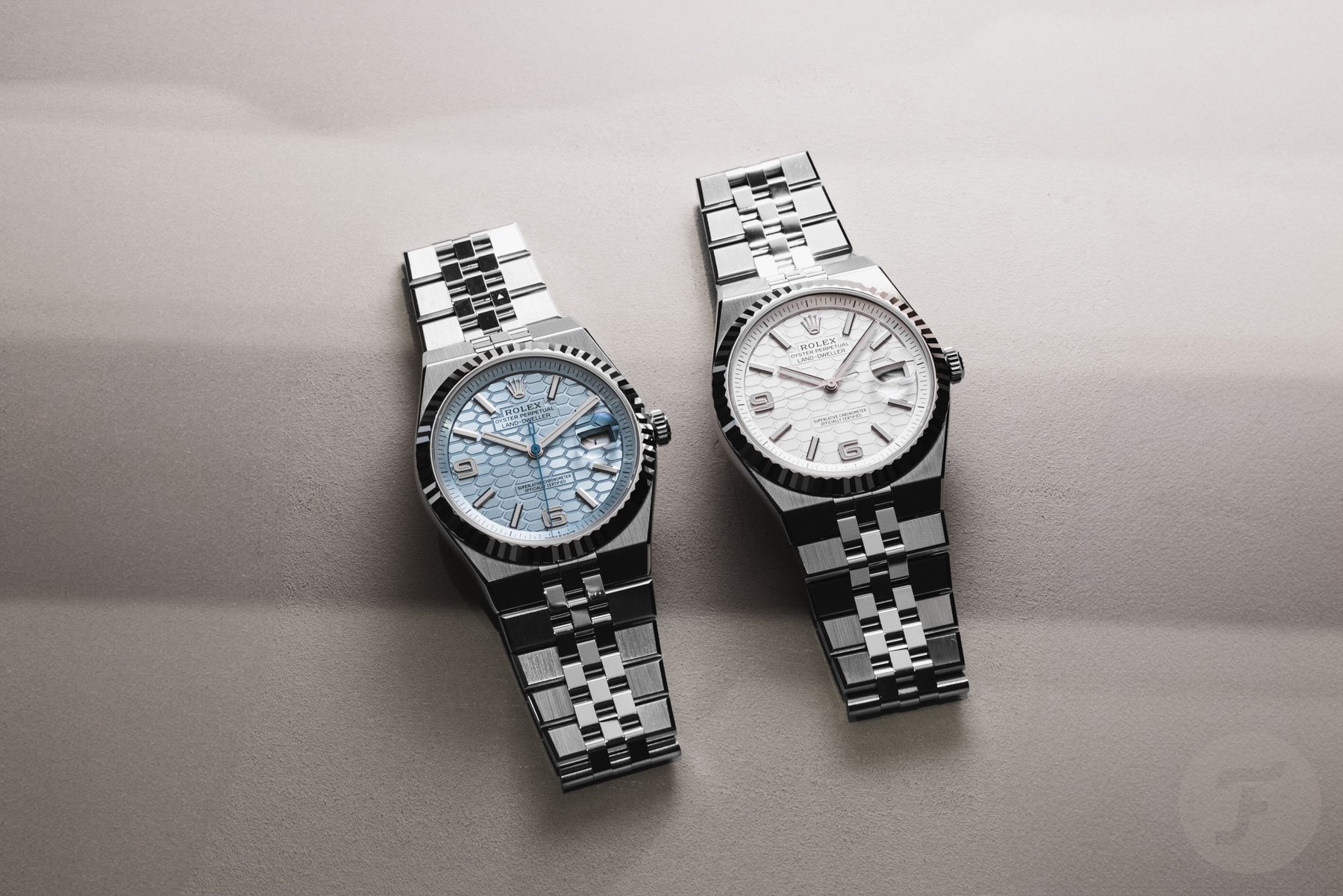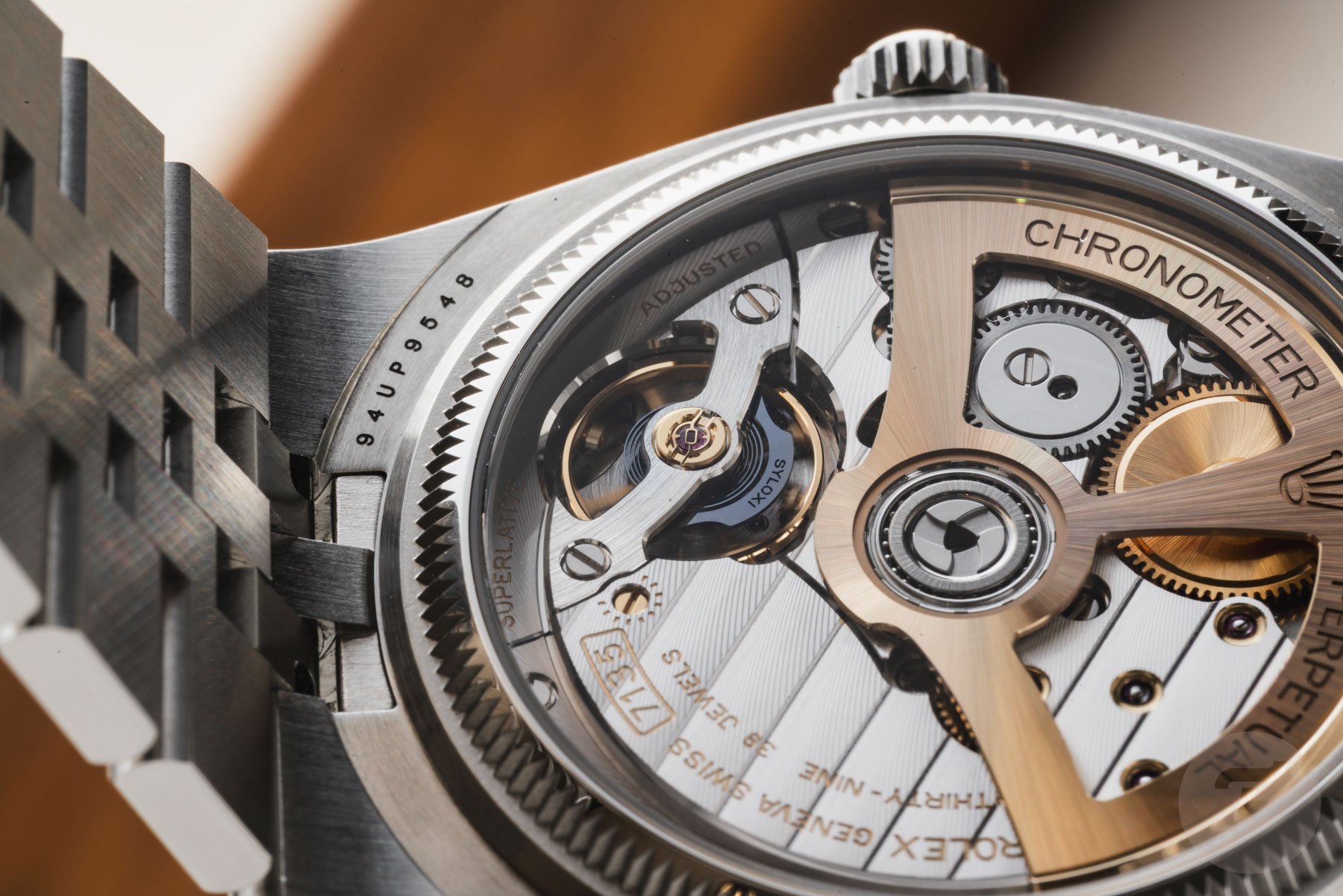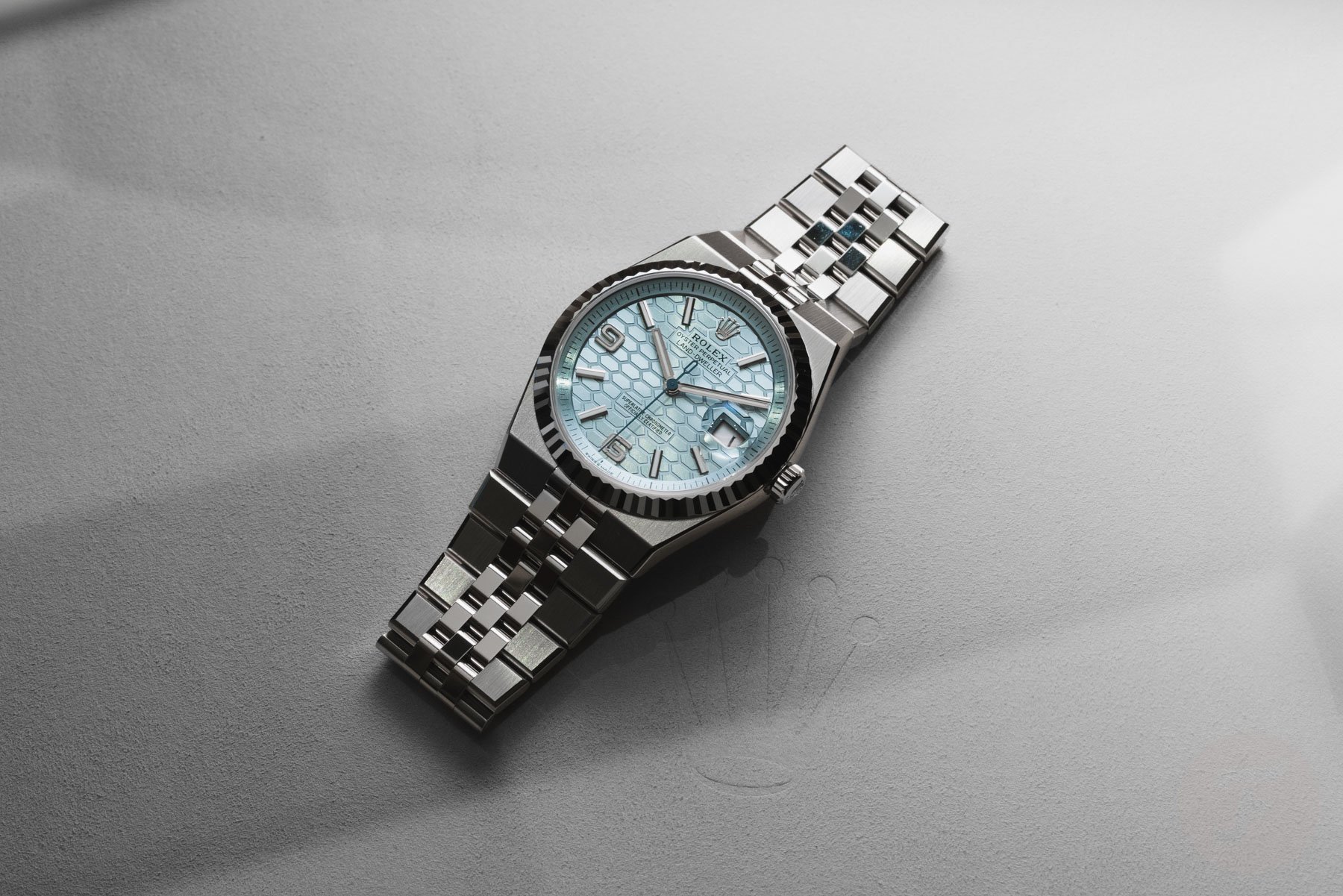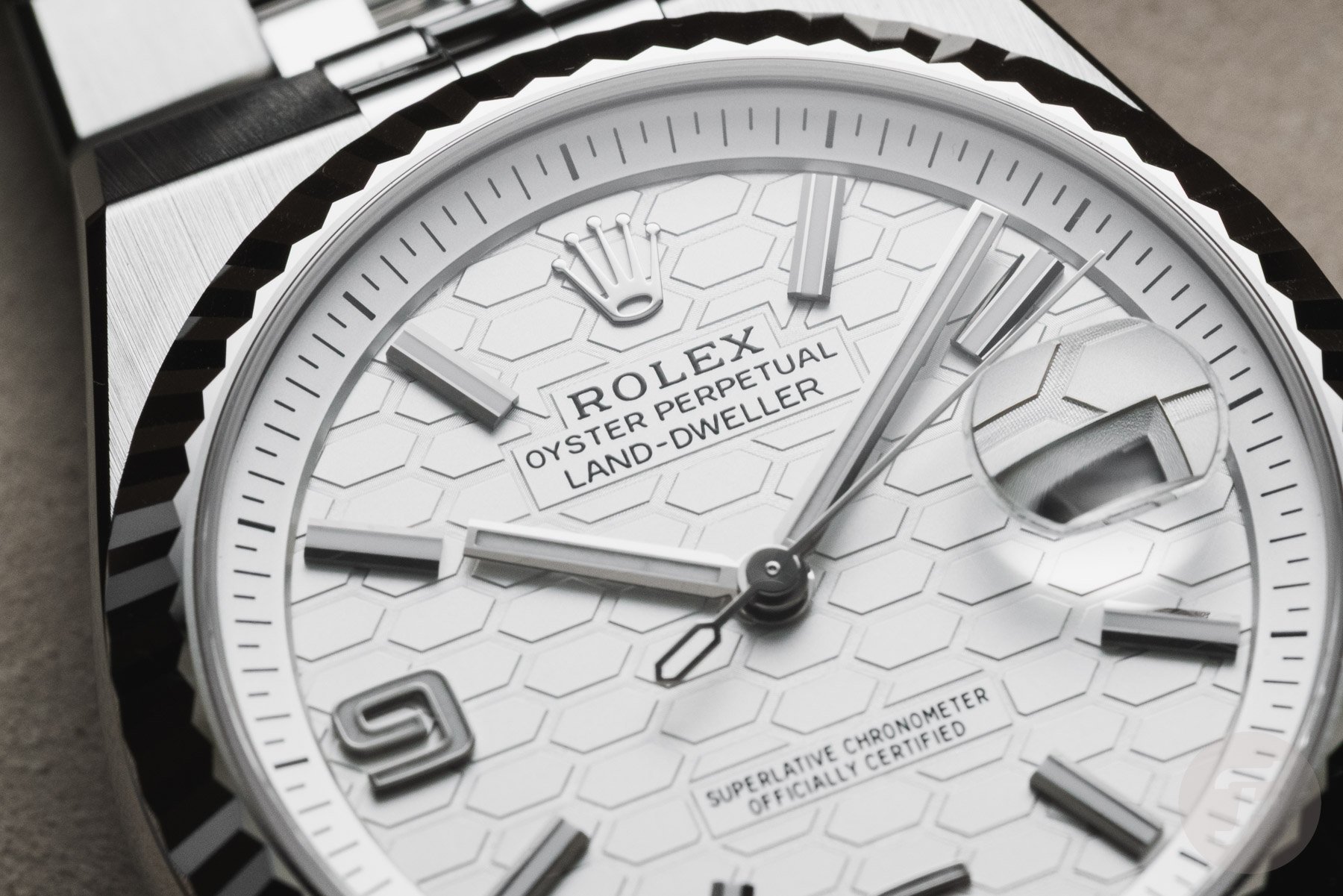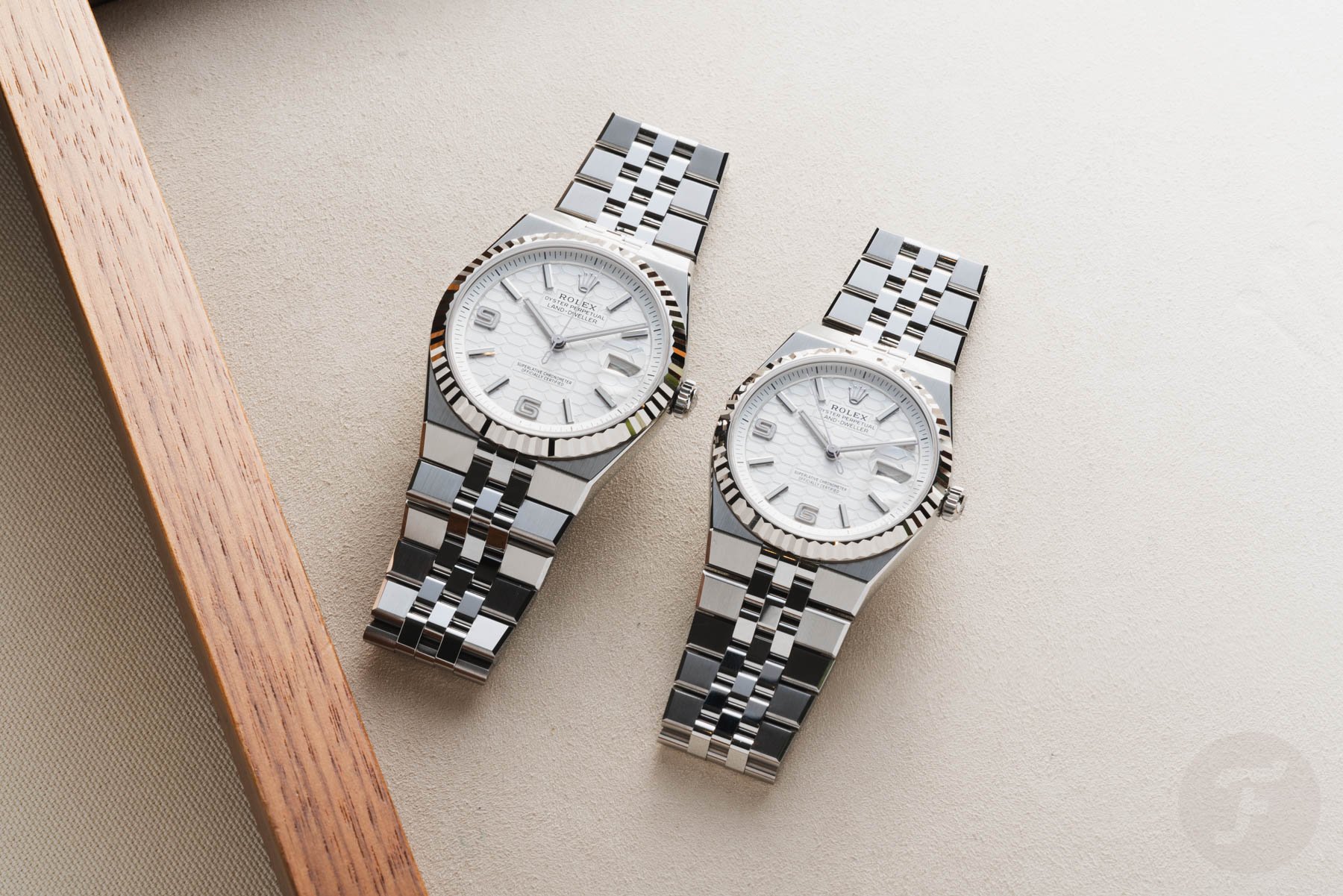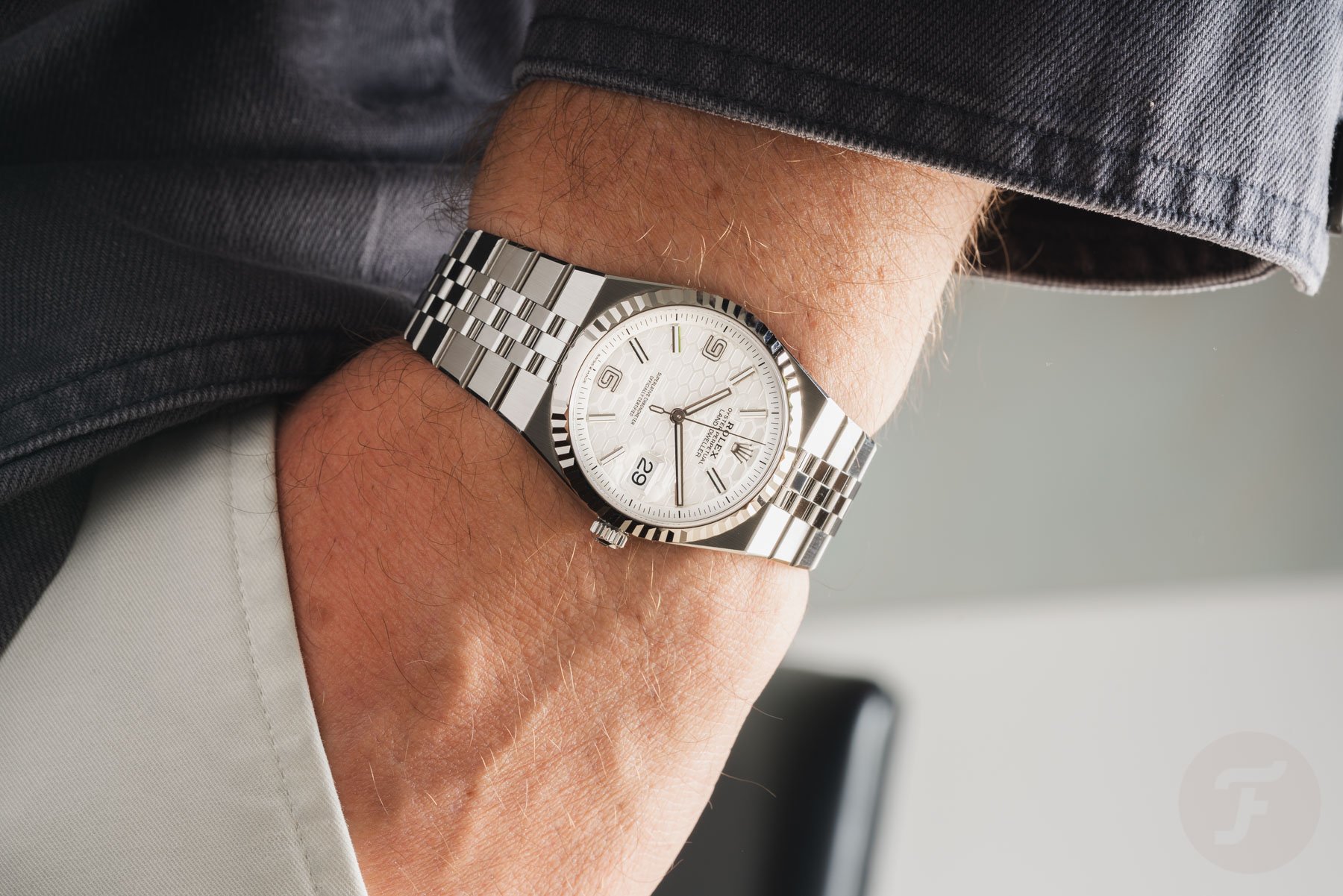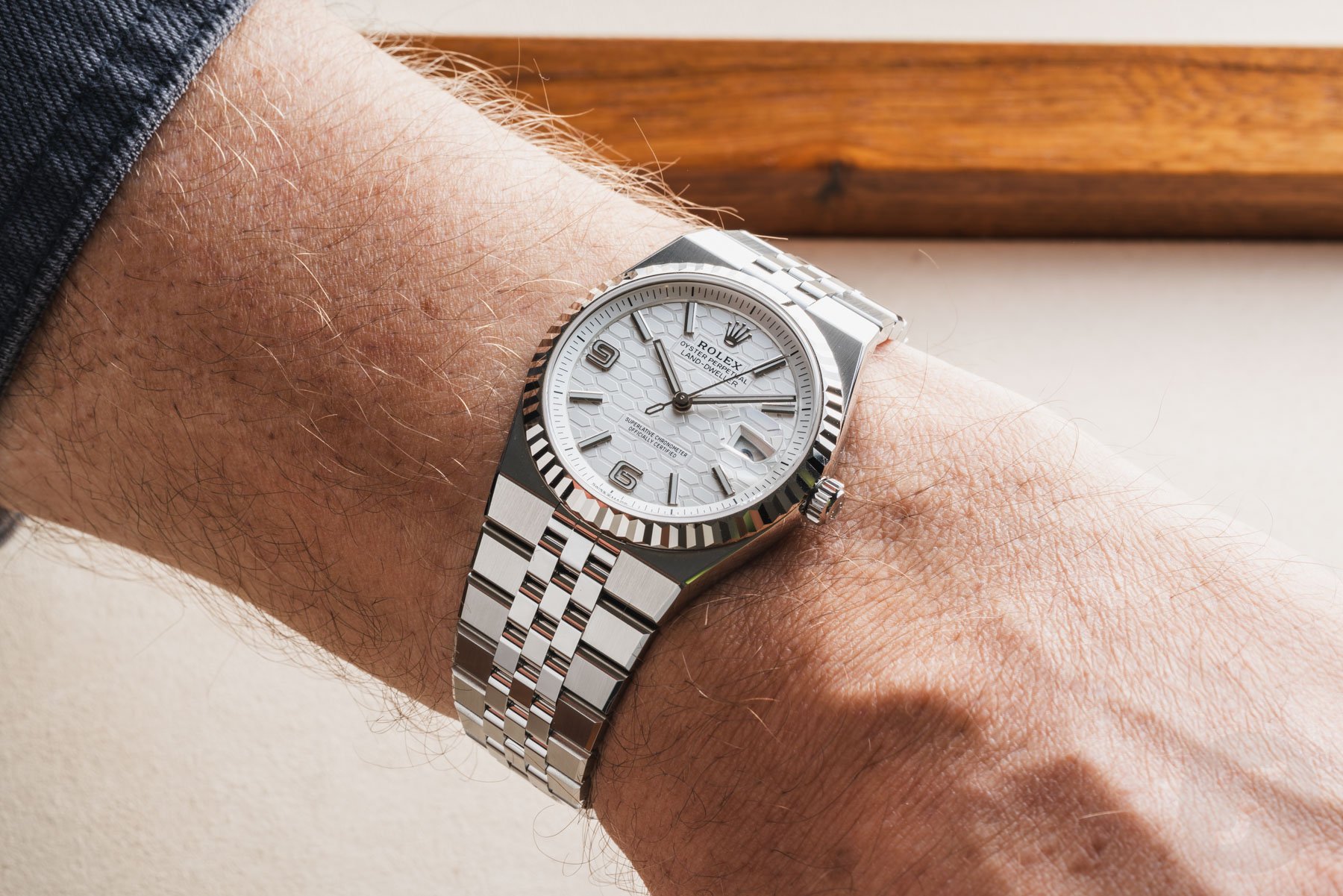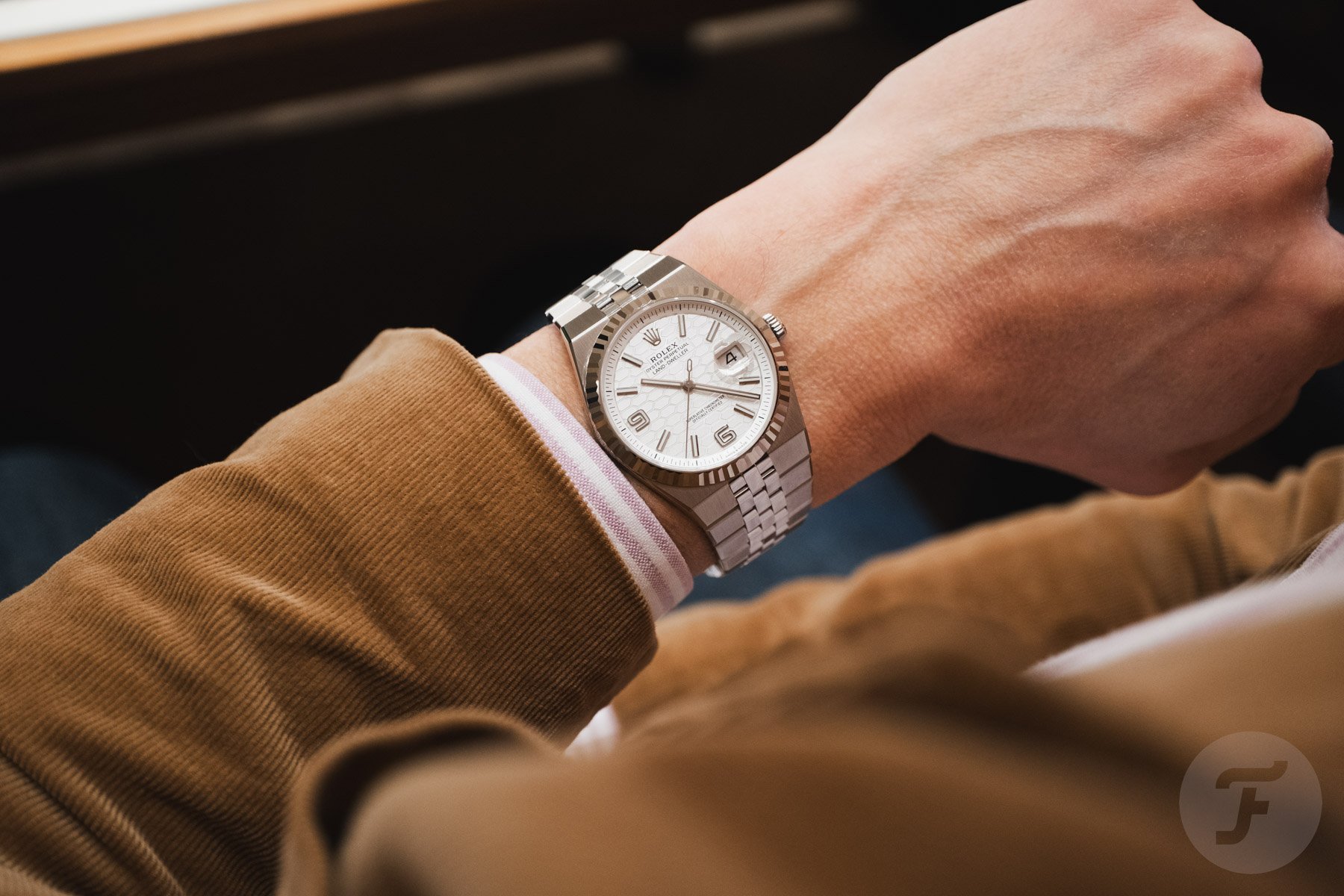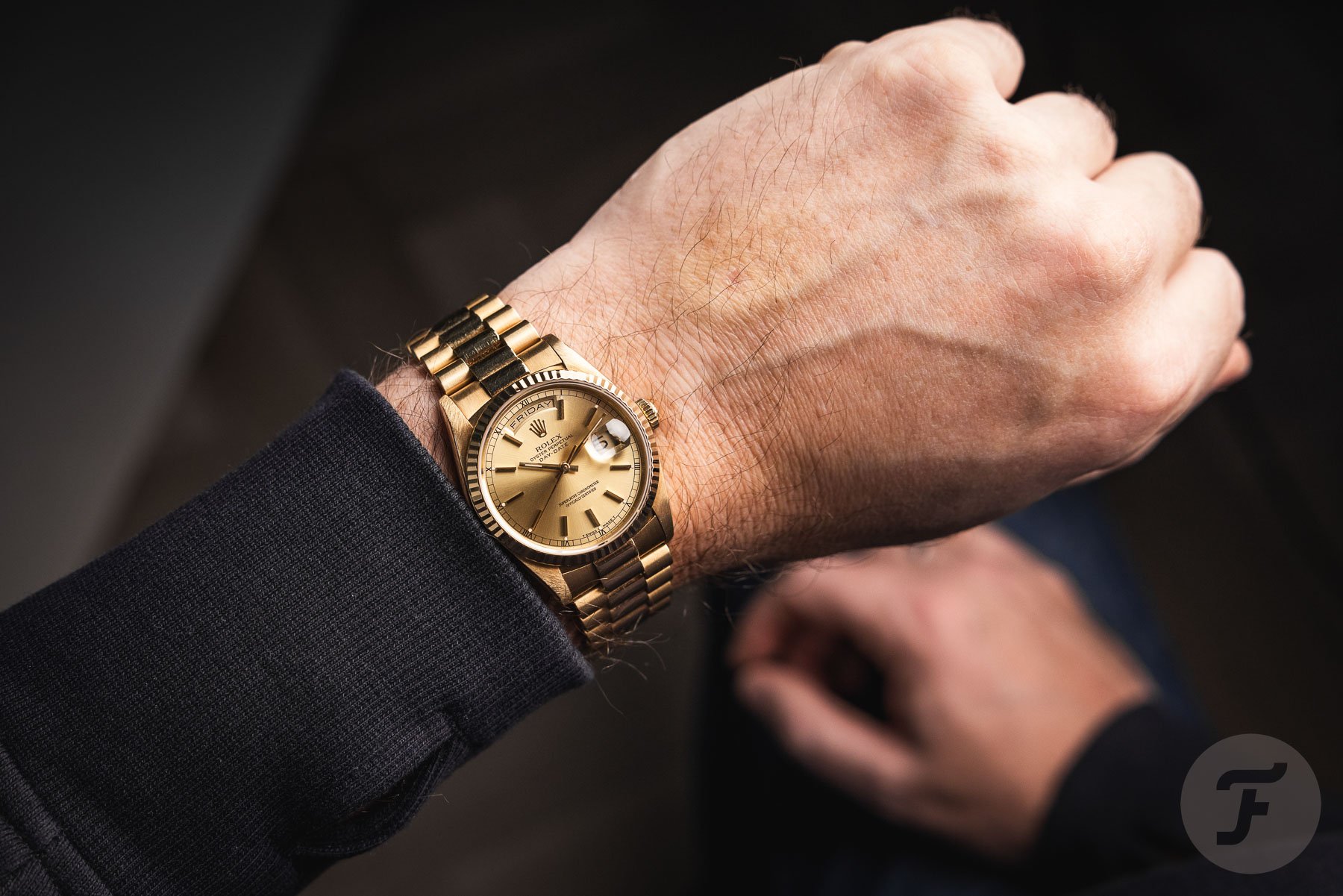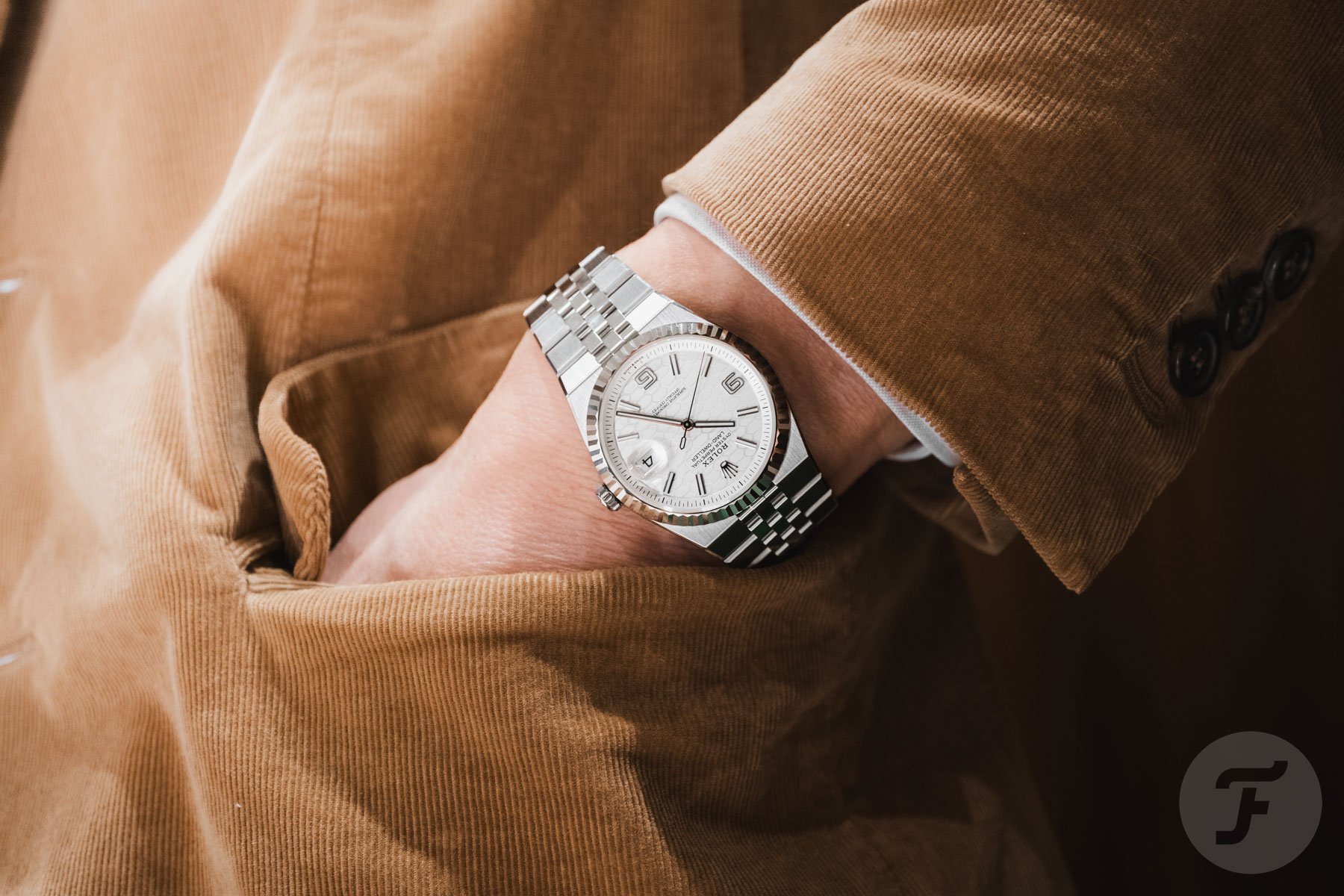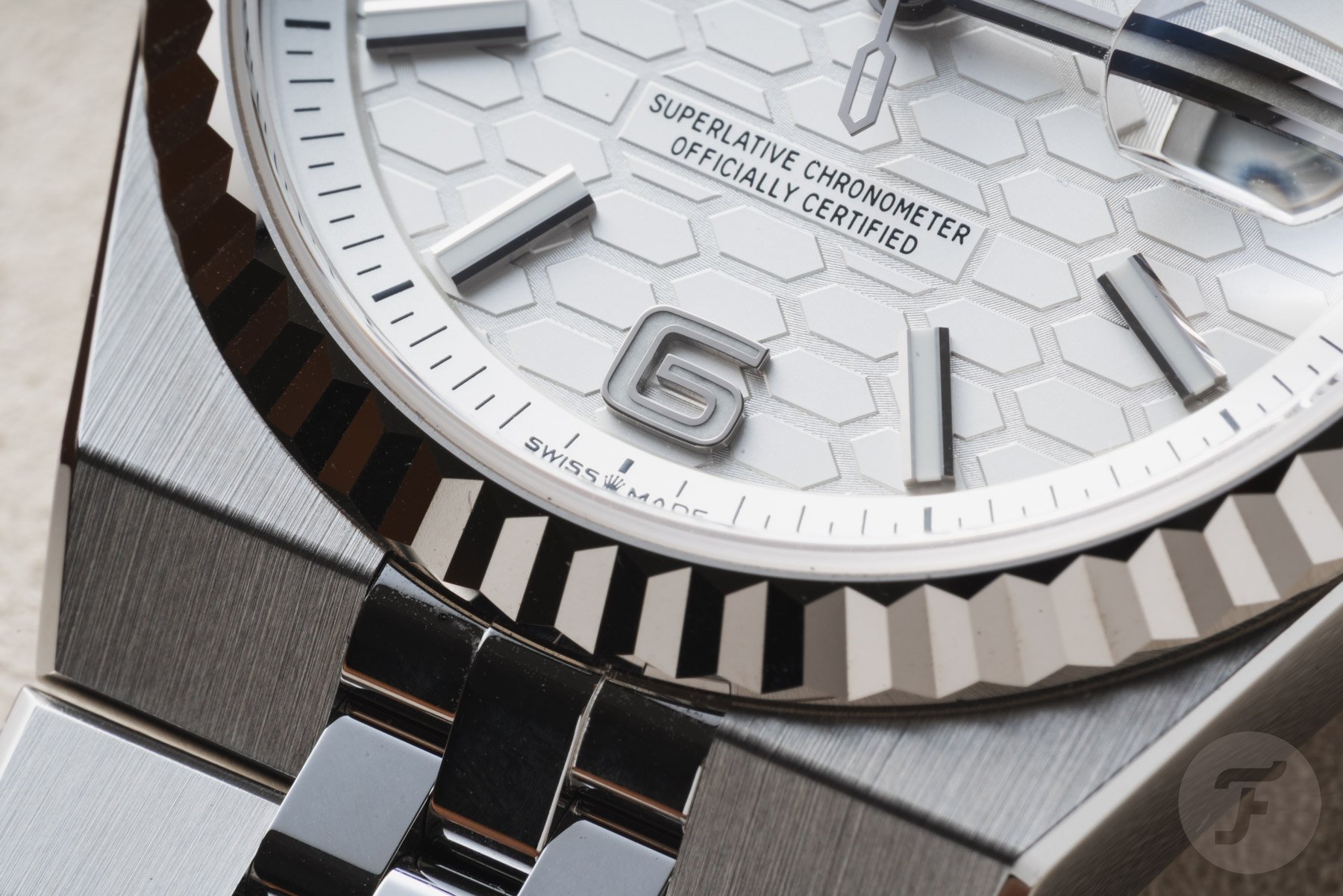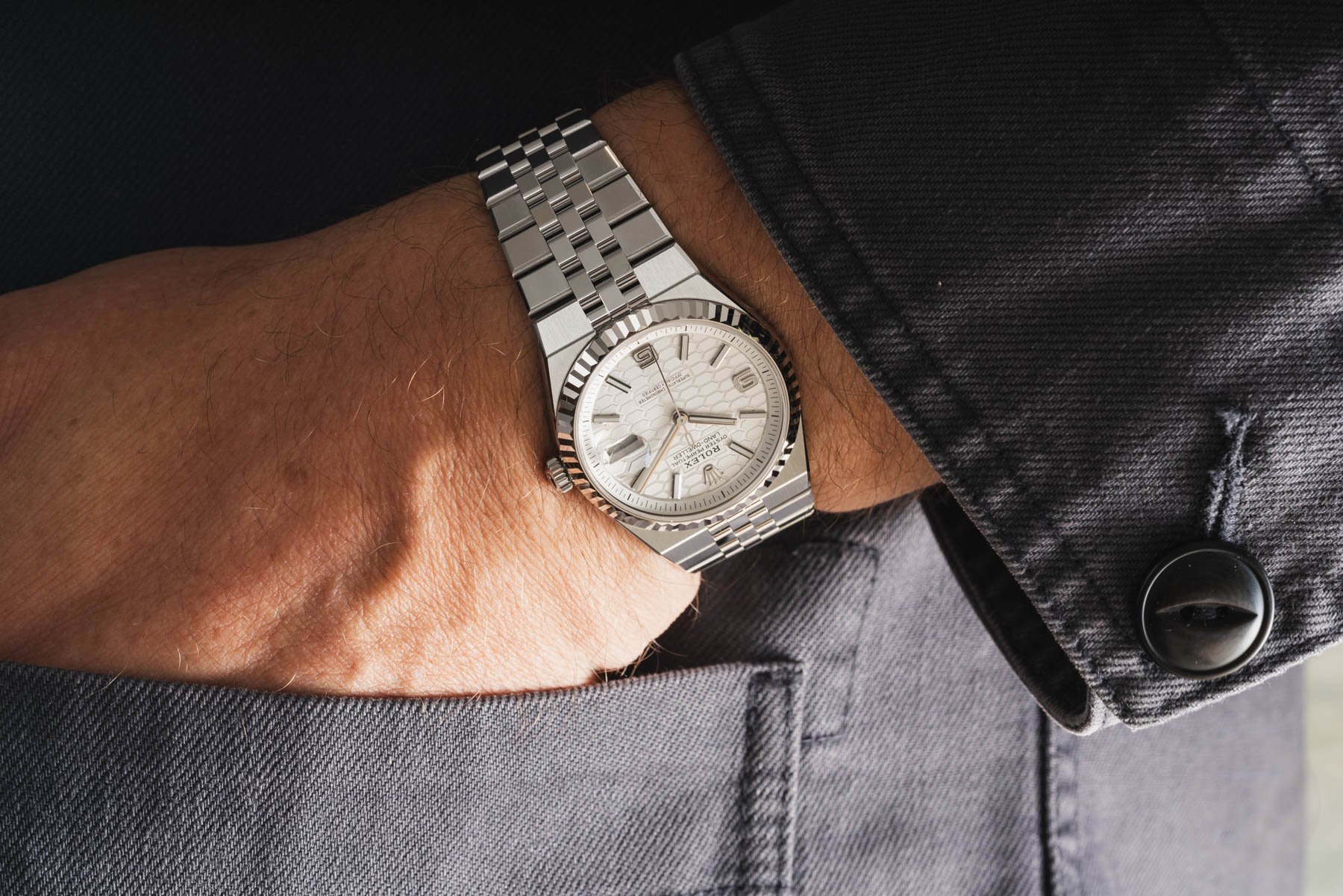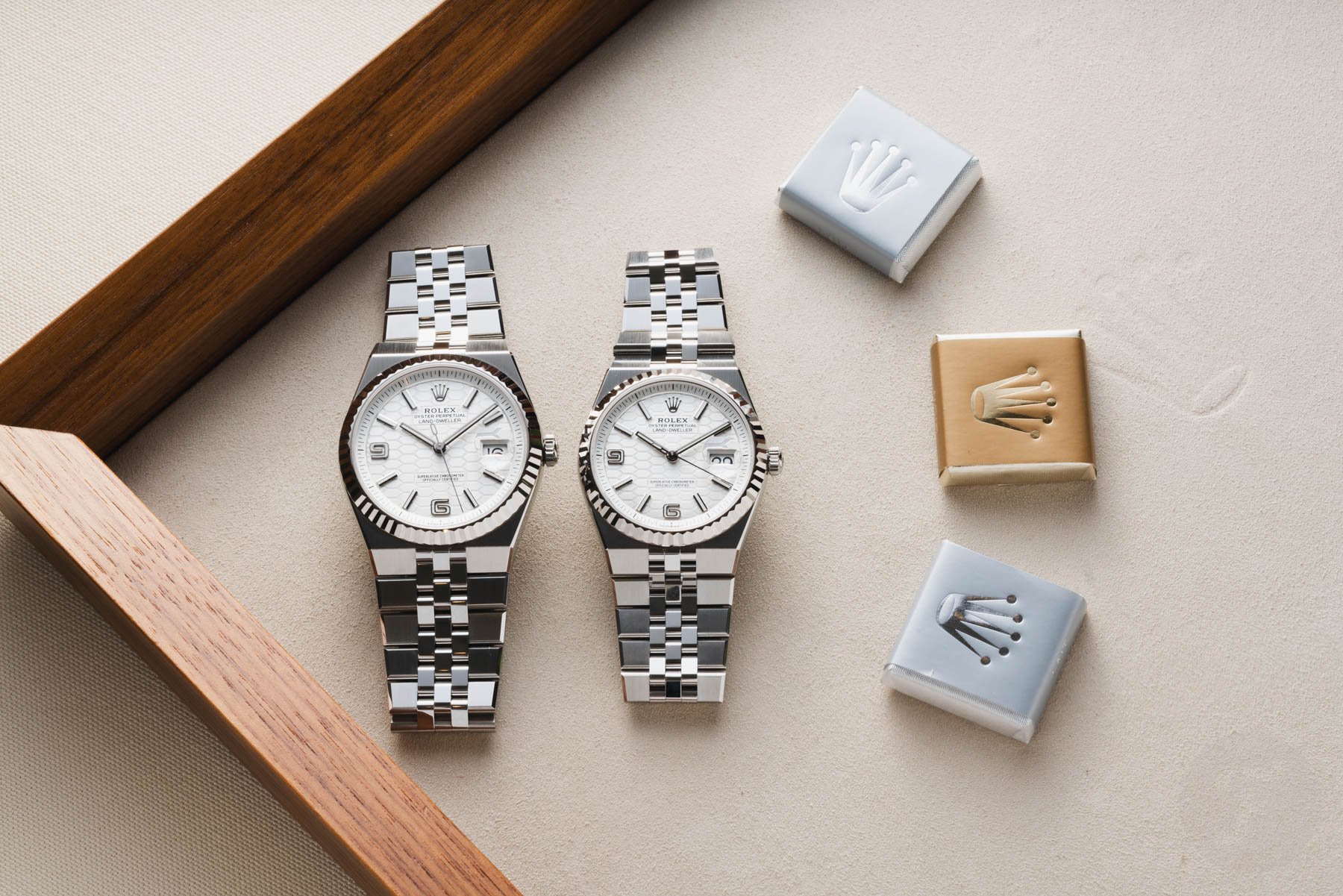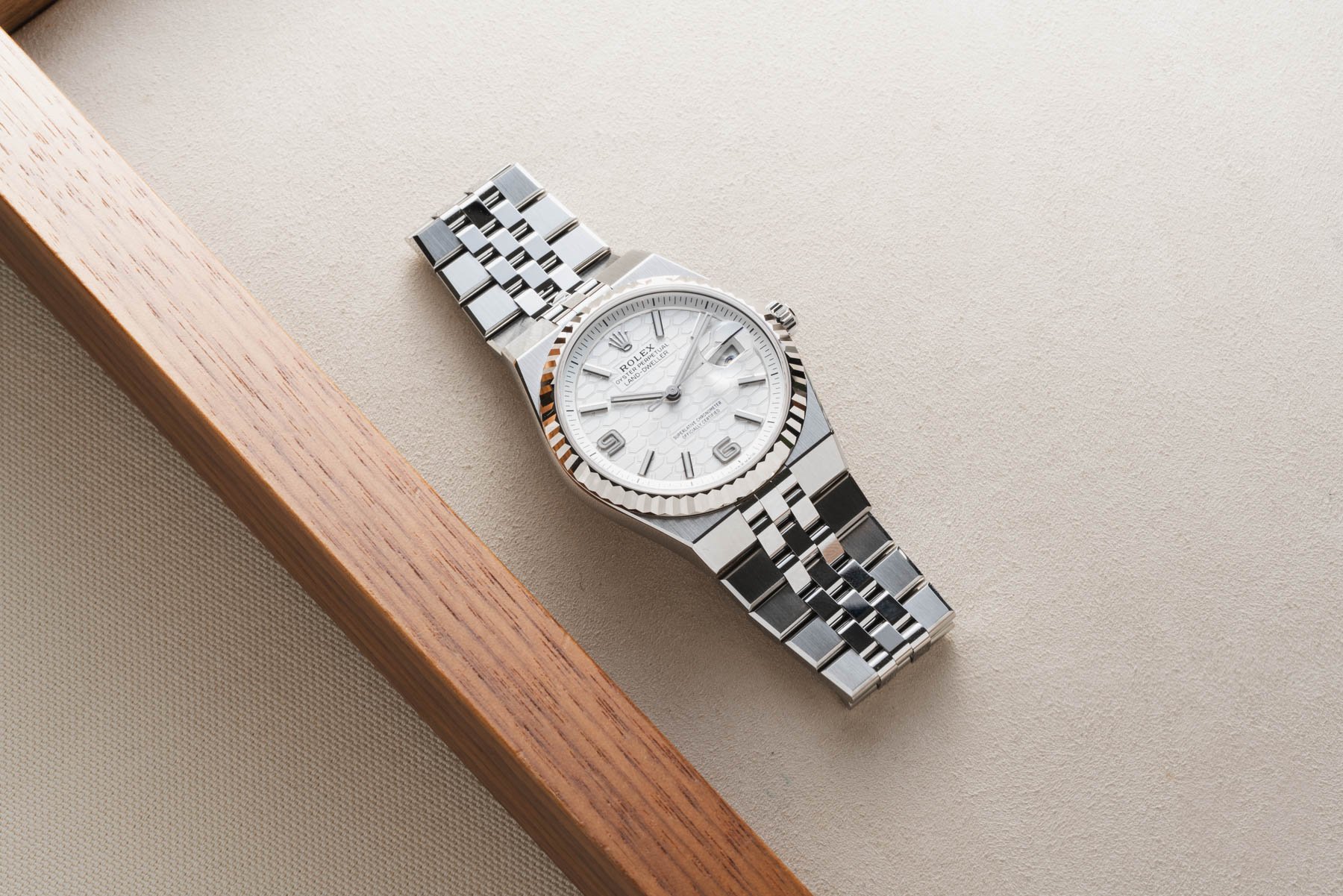What’s The Perfect Size For The Rolex Land-Dweller?
The Rolex Land-Dweller was the most talked-about release of this year’s Watches and Wonders. Regardless of whether the watch appealed to everyone, due to the groundbreaking new caliber and revival of the Oysterquartz design, the general impact of the Land-Dweller was palpable. We had an opportunity to experience the 36mm and 40mm models during Watches and Wonders. But, unfortunately, we didn’t get a chance to create a fair comparison because the smaller of the two models was presented in Everose gold. A few weeks later, we were able to line up both sizes in stainless steel to find out which of the two is the better pick.
Of course, the better pick is a personal preference. There is no universal right or wrong regarding something like size. But that is not to say that size doesn’t matter. While this article merely reflects my preferences and favorite of the two options, wearing the Land-Dweller in both sizes led to some useful general insights. The most important one for me was that I was far more impressed than I felt when the watch came out. Does the Land-Dweller now top my wish list of modern Rolex watches? Let’s say it does not…yet. Let me elaborate on that.
The story of the new Rolex Land-Dweller
If you are a watch fan but missed the leaks and eventual unveiling of the Rolex Land-Dweller, you must have been living under a huge rock. The first new non-dress collection since the Sky-Dweller in 2012 was undoubtedly the most talked-about new release of the past few years. We have discussed the Land-Dweller in great detail, so if you want to learn more about the series, I recommend reading about Mike’s initial hands-on experience after trying the watches during Watches and Wonders.
If you want to know more about the groundbreaking caliber, you can read Thomas’s article. Lastly, if you want to know my initial thoughts on the Land-Dweller, I explained them in a recent installment of our Sunday Morning Showdown series, in which it comfortably beat Patek Philippe’s Cubitus. In this article, I will focus more on the differences between the 36mm and the 40mm Land-Dweller models, both in stainless steel with a white gold bezel and white dial.
Going into this Rolex Land-Dweller comparison
But briefly referring to my initial thoughts on the Land-Dweller is good for creating some context. In the end, they determined the mindset I had as I went into the meeting to see all the Rolex novelties announced during Watches and Wonders 2025. As I said in the Sunday Morning Showdown article, “Do I love the Land-Dweller? No, not in its current form. But I like many things about it, which could cause it to turn into a love affair.”
My main gripes with the Land-Dweller before going into the meeting were all related to the dial design. I wasn’t too impressed with the honeycomb pattern. It looked too dominant and seemed to lack the refinement that I love Rolex designs for. It almost made it look gimmicky. But the main “issue” was the open numerals at 6 and 9 o’clock because they looked awkward and too big, especially on the 40mm models. Having said that, a 40mm watch is usually the perfect size for my wrist. But as this is a Rolex, different rules apply. On top of that, this is a watch with an integrated bracelet, a category with a different set of rules for picking the right size.
A great return to the style of the Oysterquartz
Let me also quickly refer to my praise for the Rolex Land-Dweller as stated in that Sunday Morning Showdown article. I love seeing the Oysterquartz aesthetic return because I am a big fan of some of the vintage models. The pre-Oysterquartz Date ref. 1530, the brilliant Oysterquartz Datejust ref. 17000, and the Oysterquartz Day-Date ref. 19018 in full yellow gold (or even an understated white gold 19019) are stunning vintage options that are as relevant as ever, as the new Land-Dweller confirms.
I also alluded to the fact that we will probably see new dials in the upcoming years. I would love to see different colors and a design variation that eschews the numerals in favor of a full set of baton markers, which could make me a fan. Seeing the new black- and blue-dial Oyster Perpetual models made that abundantly clear. They look stunning.
While all that remains to be seen, I was curious enough to find out more about the two available sizes. First, it might provide some nuance to my opinion on the current dial. As we hadn’t gotten to see the 36mm version in stainless steel with a white dial at Watches and Wonders, I was hopeful that the reduced size might also lead to an increase in refinement. Second, I was super curious to find out my favorite size based on more than just what fits my wrist better.
Call me a Rolex traditionalist…
I usually would call myself a pragmatist and choose what would work best for my 18.5cm wrist. For Rolex sports watches, that answer is easy: the 40mm case size of most sports models is just right for me. Except for the titanium Yacht-Master with its 42mm case, I will pick a GMT-Master II, Explorer, Daytona, and Submariner — I know, the last one is officially 41mm, but in reality, it’s 40.5 — over the currently larger models, like the Sea-Dweller and Explorer II. I would pick the older five-digit versions of those for their size and vintage charm. And as for the Yacht-Master? Well, if Rolex made a 40mm version in titanium, I would be all over that instead of the 42mm version.
But I’d consider myself a traditionalist regarding the more classic Rolex models, despite 40mm watches fitting me like a glove. Give me the choice of a Datejust, Day-Date, or Oyster Perpetual, and I will pick a 36mm version every time over the larger available options. The main reason is simply because a historical precedent has left an imprint on me that that’s how it should be. It sounds ridiculous, I know.
But with that feeling also comes a rationale. Put a 36mm Datejust or Day-Date on your wrist, and you’ll understand that it feels perfect. The balance of elements makes for ideally proportioned watches. It also makes it hard to create a bigger version without losing those perfect proportions. This is something that Rolex’s designers have struggled with in the past; just think of the Rolex Datejust II. On top of that, the 36mm size of those watches works well on my wrist for these watches. The visual impact simply hits the spot.
First side-by-side impressions of the two Land-Dweller sizes
So, how would that turn out for the Land-Dweller? As part of the Classic range within the Rolex collection, the 36mm model would be the immediate answer, right? And that is the first model I put on my wrist. After I took off my 37mm VPC Type 37HW, the 36mm Land-Dweller felt somewhat small. Honestly, it threw me off a bit. For a second there, I could almost swear it was too small. And I was also surprised that the integrated-bracelet design didn’t have the larger presence I have come to expect. But once I put the 40mm version on my wrist, I became aware of the difference between the two sizes, which made things very clear.
Funnily enough, quite a few people in the room complimented the look of the 40mm version on my wrist. The watch felt very good too. But that was not just the result of the 40mm size. The 36mm and 40mm versions are also incredibly well-thought-out watches that are designed, engineered, and produced to the highest standards. After more than two decades of exploring the world of luxury watches, I am still impressed whenever I put a Rolex on my wrist. There is no feeling like that.
The unique design canvas that the Rolex designers created in the 1950s
Pinpointing that feeling exactly is also where the crux of my preference for one of two sizes is. Essentially, it rationalizes that feeling I described before as “how it should be.” It’s all in the magic, the craft of great design. In the 1950s, Rolex’s designers created a design canvas so expertly thought out that it defined the industry. And that goes for both the brand’s classic and sports watches. Looking at the Rolex designs of the 1940s and early ’50s, you will see the old alpha hands and arrow-shaped indexes that feel properly vintage. Then, Rolex introduced baton makers and hands for models like the Datejust, “Pre-Daytona” ref. 6238, and Day-Date, which was essentially a very simple update in terms of shapes.
But in terms of visual balance and the timeless character of its design elements, this canvas was an absolute stroke of genius. Add the equally brilliant strategy of only updating that same design instead of revolutionizing it, and you have the two elements that make me respect Rolex above all the other brands. During my almost two decades working in the design world, I have hardly found a solution so simple yet fitting and the conviction to stick to it no matter what. People always want change, and designers often want revolution instead of evolution. The only constant is change, right? Wrong! Consistency is key here. This has been the solid basis of Rolex’s success over the past seven decades.
The 36mm version is the Rolex Land-Dweller for me
This also explains why I am not the biggest fan of the Land-Dweller’s dial design. We don’t need the open numerals and the honeycomb pattern. It feels like Rolex is doing something other brands would do. While Rolex has been very successful in updating the numerals of the Explorer to keep its distinct character, you can always debate its style. There are plenty of people who prefer the style of a ref. 1016 over the modern Explorer dials. With the baton-style indexes, you will never have that discussion, and that’s why they are one of the keys to success. However, as stated, that’s an easy next step for the Land-Dweller that many will appreciate.
You might be thinking, “That’s nice, but which is the better size for the two Land-Dwellers?” In short, the 36mm version is for me. After spending some time with both watches, I quickly realized that I prefer 36mm cases for all the watches in the Rolex Classic line. While I do not debate that the Rolex designers have more recently done a great job of adapting designs for different sizes, the 36mm versions are the original canvas that still works best. It brings a natural visual balance that feels right, leaves no large empty spaces, and also ensures the necessary refinement that I want from a classic Rolex design.
Final thoughts on the new Rolex Land-Dweller
After spending a few hours with the two Rolex Land-Dwellers, I was seriously impressed. The overall style and quality of the watches make it hard not to feel so. On top of that, both watches are a great display of Rolex’s move into the future, manifested by the new caliber 7135 and the decision to put it on display. The Flat Jubilee bracelet with the hidden clasp is more proof of that evolution. It’s incredibly comfortable and a bracelet that only Rolex can produce in mass.
But with all those changes, one thing hasn’t changed — my love for 36mm classic Rolex models. Defined in the 1950s, the formula successfully found its way to the Oysterquartz models in the 1970s, and now it proves itself right for the Land-Dweller as well. The new 36mm Rolex Land-Dweller offers a spot-on visual balance of its different elements.
Additionally, it offers the desired refinement in the case, bezel, and bracelet design to make it my pick over the 40mm version. The 36mm Rolex Land-Dweller truly has the potential to be the full package if the dial design receives an update. It’s a very simple answer to a question that I could have answered in one sentence, and I am well aware of that. If you have gotten this far, I appreciate that you have read the ramblings of a writer trying to rationalize a feeling that remains very personal. But often, the simplest feelings are the hardest to explain. Sometimes things are exactly the way they should be.

